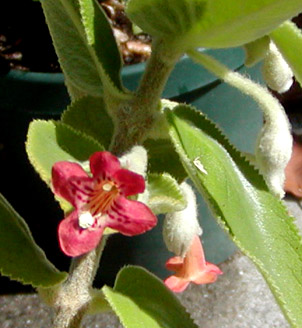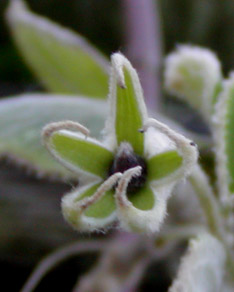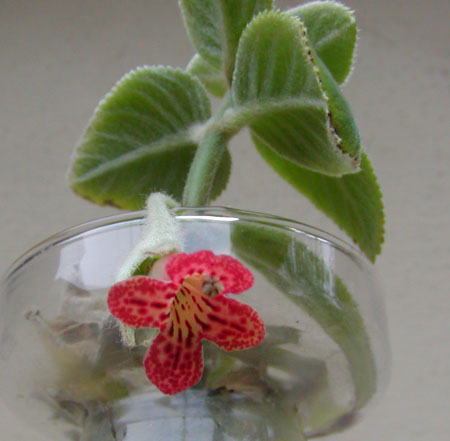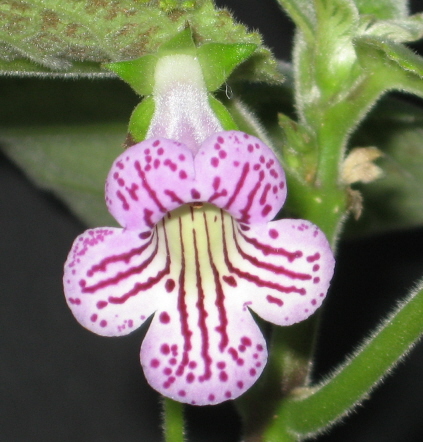Vanhouttea lanata
A shrub with woolly leafbacks, flowerbuds, and calyxes
- Calyx lobes enclose the flowerbud
- Calyx and fruit
- Hybridization
- Feature table
- External link
- Publication
- Etymology
The name lanata ("woolly", see etymology below) comes from the dense white hair covering the pedicels, calyxes, and backs of young leaves. This woolly character is most pronounced in blooming season, since the hair completely covers the developing flowerbud and its stalk.




